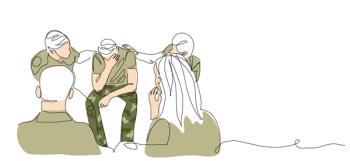
“Porosity”: Connecting 2 Western Cultural Psychiatric Discourses in Tokyo by Way of Naples
Key Takeaways
- Arthur Kleinman emphasized the cultural and personal dimensions of elderly care, highlighting the challenges and rewards of caregiving in aging populations.
- Laurence Kirmayer explored the role of metaphor in illness, suggesting it reveals symbolic and imaginative healing mechanisms.
Porosity as an embodied metaphor.
SECOND THOUGHTS
The 48th Keio Symposium on Bridging Humanities, Social Sciences, and Medicine:
“Mental Health, Aging, and Cultural Psychiatry”
with Arthur Kleinman and Laurence Kirmayer
Keio University, Tokyo, Japan, September 26, 2025
Keio University in Tokyo, Japan recently hosted 2 prominent psychiatrists and cultural scholars, Professor Laurence Kirmayer, MD, FRCPC, FCAHS, FRSC, from McGill University and Professor Arthur Kleinman, MD, PhD, from Harvard University, who have dedicated their careers to understanding the meaning and impact of culture on mental health for their symposium on “Mental Health, Aging, and Cultural Psychiatry.”
Kleinman addressed the “Care of the Elderly: Lessons Learned from Collaborative Cross-Cultural Interdisciplinary Research in China.” Kleinman is a psychiatrist and anthropologist who has taught in the Department of Global Health and Social Medicine at Harvard Medical School and in the Department of Anthropology at Harvard University. He is a leading figure in medical anthropology, cultural psychiatry, global health, social medicine, and the medical humanities. His research spans topic like culture and depression, SARS in China, world mental health, suicide, placebos, AIDS in China, and the relationship between anthropology and philosophy.1,2 In his talk, Kleinman explored the human dimension of caring for older adults, highlighting the long, hard, unglamorous, and often tedious work this demands, applying it to the challenges of an aging population, notably in Japan. It is nonetheless rich in moments of joy and in personal and cultural meanings. Of all his books, the one he most warmly recommended to me is The Soul of Care: The Moral Education of a Husband and a Doctor.2
Professor Laurence J. Kirmayer, MD, FRCPC, FCAHS, FRSC, gave a lecture entitled, “Toward a Poetics of Illness Experience.”Kirmayer is Distinguished James McGill Professor and Director, Division of Social and Transcultural Psychiatry, Department of Psychiatry, McGill University. He conducts research on culturally responsive mental health services and the anthropology and philosophy of psychiatry. A Fellow of the Canadian Academy of Health Sciences and the Royal Society of Canada, Kirmayer’s lecture illuminated aspects of his recent publication, Healing and the Invention of Metaphor: Toward a Poetics of Illness Experience.3 The heart of his argument is this: “metaphor can open a window to the hidden mechanisms of healing driven by meaning and symbolism, myth and imagination.”3 Kirmayer explores “the metaphors embedded in the epistemology and practice of contemporary biomedicine, psychiatry, and psychotherapy,” while exposing “the sociomoral and political dimensions of these dominant approaches to understanding and treating illness.”3
Together, the range of their interventions was breath-taking. From what is arguably the highest abstraction of human existence into its metaphoric extensions that Kirmayer depicted to their final common cognitive grounding being peeled away like layers of an onion by Kleinman.
As the final speaker at the symposium, I shared these concluding thoughts.
Porosity: The Cultural Legacy of Naples
If I had to choose a metaphor that connects these extremes of human existence, I would offer porosity. In a 1925 essay in German on Neapel, or “Naples” as we know it, Walter Benjamin and Asja Lacis grasped the character of the city in 1 word: porosität, porosity.4 “Nothing is definitive,” in Naples, “Everything is permeated (durchdringen, German) with everything else.”4 Holidays permeate the workday week which spills over into Sundays as well.
Permeation—Durchdringung in German—is a concept that Benjamin deployed in his writing and reflected perhaps his own liquid life and permeable mind. In the centennial year of their celebrated essay, porosity is now being hailed as the heart of the Frankfurt School of Critical Theory through the visits to the Bay of Naples by its founder, Theodor Adorno, and through the definitive essay on porosity by Benjamin and Lacis.5,6
Now, both Kirmayer’s invocation of metaphors and Kleinman’s bio-ethnography of cognitive decline are porous: boundaries blur, rigidity softens, rules are loosened.
Why does this come to mind now? In North America, and perhaps the West in general, we are increasingly caught in a binary world of rigid polarities, contradictions and opposition, which leaves me searching for alternatives to “either/or” with “and/and” constructions. I approached this with poetic irony in my collection, Two Kinds of People,7 and in
Benjamin’s porosity has become a topos in the humanities,9 ranging from discussions of Naples, Italy, and urban planning in general, and is related to Palestinian American Edward Said’s “traveling theory”10 and American interdisciplinary scholar James Clifford’s “traveling culture.”11 (All of which prefigures transnational approaches in the humanities.) Turkish American philosopher of law, Seyla Benhabib, for example, observed that, “the boundaries of cultures are fluid, porous and contested.”12 British sociologist Zygmunt Bauman characterized our age as “liquid modernity,” his riposte to the term postmodernity.13
Bateson’s “Metaphors That Are Meant”
Now, let me ask what happens when instead of porosity, permeation, and innovation, we have instead rigidity and concreteness? American anthropologist Gregory Bateson talked about “metaphors that are meant”14 and gave examples from Christian religious belief: the communion wafer IS the body of Christ, the wine IS the blood. An earlier generation tried to see in schizophrenic utterances this kind of metaphoric communication.15 Bateson gave the example of a patient with chronic schizophrenia who refused to eat. When encouraged by his interlocutor to eat, the man responded: “Manzanita Wood.” This took place in California where the manzanita wood is a common shrub. Bateson patiently deciphered this cryptic message: Man’s an eater (Manzanita)—if the conditions were right—he would (wood).
Conclusion: Embodied Metaphors
A concluding anecdote. Several years ago, we placed my mother, Nena, at the age of 90 in a long-term care residence after an incident where she wandered out of her house in the deadly cold of our Canadian winter. Feeling disoriented, she had the good sense to knock on a neighbor’s house who called the police who then entrusted her to her sister’s care. We prepared her as best we could for the transition and during her first day in the residence, I asked her how felt. She replied, in Italian, that she was in Civitavecchia. Now, Civitavecchia is a town on the sea from the Roman times close to where she briefly lived and worked in Rome. Its name literally means, “old city.” My mother was metaphorically transforming her experience by telescoping her youthful memories into her present reality that I had confined her to a “city of the old.” Think of it as an embodied metaphor.
Both in the rarefied heights of metaphors grasping the sense of human life with sublime poetry channeling a people’s culture and history and in the embodied metaphors of cognitive decline through aging and neurodegenerative disease, the porous exchange between meaning and survival hangs on the metaphors we live by.
My Montreal friend and colleague Laurence Kirmayer spoke to the porousness of meaning that we may achieve through metaphor while Arthur Kleinman, a long-time colleague, older than Laurence and me, spoke compassionately from the deeply personal experience of caring for his wife and what it taught him. I sensed above all, a summing up, a porous exchange between the anthropological pioneer and the compassionate physician he truly is. As I sat down beside him after my commentary, what I felt from Arthur was an authentic empathy for my experience with my aged mother. He just leaned over and said, “I know what you’re going through.”
Dr Di Nicola is a child psychiatrist, family psychotherapist, and philosopher in Montreal, Quebec, Canada, where he is professor of psychiatry & addictology at the University of Montreal. He is also clinical professor of psychiatry & behavioral health at The George Washington University and president of the World Association of Social Psychiatry (WASP). Dr Di Nicola has received numerous national and international awards, honorary professorships, and fellowships. Of note, Dr Di Nicola was elected a Fellow of the Canadian Academy of Health Sciences (FCAHS), given the Distinguished Service Award of the American Psychiatric Association (APA), and is a Fellow of the American College of Psychiatrists (FACPsych) and Fellow of the Royal Society of Canada (FRSC). His work straddles psychiatry and psychotherapy on one side and philosophy and poetry on the other. Dr Di Nicola’s publications include: A Stranger in the Family: Culture, Families and Therapy (WW Norton, 1997), Letters to a Young Therapist (Atropos Press, 2011), and Psychiatry in Crisis: At the Crossroads of Social Sciences, the Humanities, and Neuroscience (with D. Stoyanov; Springer Nature, 2021).
Acknowledgements
I am grateful to Junko Kitanaka, PhD, Professor of Medical Anthropology in the Department of Human Sciences of the Faculty of Letters, Keio University, Japan for organizing the Keio Symposium and for inviting me to participate. I am also grateful to Professors Kleinman and Kirmayer for edifying conversations about their work at the Keio Symposium on September 24, 2025, and at the Pacific Rim College of Psychiatrists & World Association of Cultural Psychiatry 2025 Joint Congress, Tokyo, Japan, September 26-28, 2025. Finally, John Farnsworth, PhD, offered his always valuable comments that improved this essay.
References
- Kleinman A. What Really Matters: Living a Moral Life amidst Uncertainty and Danger. Oxford University Press; 2007.
- Kleinman A. The Soul of Care: The Moral Education of a Husband and a Doctor. Penguin Books; 2020.
- Kirmayer LJ. Healing and the Invention of Metaphor: Towards a Poetics of Illness Experience.Cambridge University Press; 2025.
- Benjamin W, Lacis A. Naples. In: Benjamin W, Demetz P, Ephcott EFN, eds. Reflections: Essays, Aphorisms, Autobiographical Writings. Harcourt Brace Jovanovich; 1978.
- Meaney T. The surprisingly sunny origins of the Frankfurt School. The New Yorker Magazine. November 25, 2024. Accessed October 29, 2025.
https://www.newyorker.com/magazine/2024/12/02/naples-1925-martin-mittelmeier-book-review - Mittelmeier M. Naples 1925: Adorno, Benjamin, and the Summer that made Critical Theory. Frisch S, trans. Yale University Press; 2024.
- Di Nicola V, Donoyan A. Two Kinds of People: Poems from Mile End. Delere Press; 2023.
- De Noronha M, Di Nicola V. Workshop: Pathological polarization – Symptom of a social illness: Overcoming Polarization – Tools for Health Professionals and Educators. Pacific Rim College of Psychiatrists & World Association of Cultural Psychiatry 2025 Joint Congress, Tokyo, Japan, September 26, 2025. Accessed October 1, 2025.
https://www.researchgate.net/publication/395941045_POLARIZATION_-_SYMPTOM_OF_A_SOCIAL_ILLNESS_Overcoming_Polarization_-_Tools_for_Health_Professionals_and_Educators - Smith D.
Porosity and the transnational: travelling theory between Naples and Frankfurt (Walter Benjamin, Asja Lacis and Ernst Bloch). Forum for Modern Language Studies. 2021;57(2):240-259. - Said EW. Traveling theory. In: The World, the Text, and the Critic. Harvard University Press: 1983:226-277.
- Clifford J. Traveling cultures. In: Routes: Travel and Translation in the Late Twentieth Century. Harvard University Press; 1997:17-46.
- Benhabib S. The Claims of Culture: Equality and Diversity in the Global Era. Princeton University Press; 2018:184.
- Bauman Z. Liquid Modernity. Polity; 2000.
- Bateson G. Steps to an Ecology of Mind. Jason Aronson; 1972.
- Bateson G, Jackson DD, Haley J, Weakland J.
Toward a theory of schizophrenia. Behavioral Science. 1956:1:251-264.
Newsletter
Receive trusted psychiatric news, expert analysis, and clinical insights — subscribe today to support your practice and your patients.











